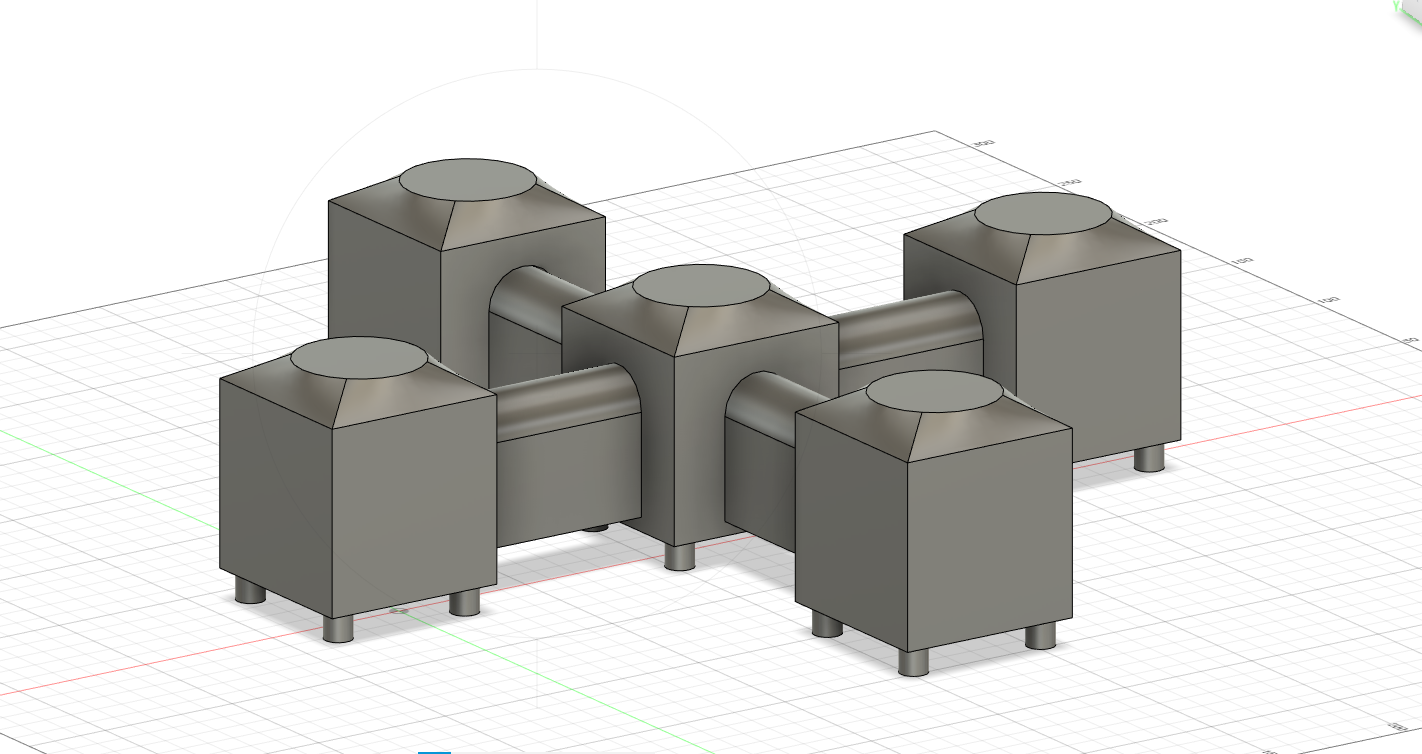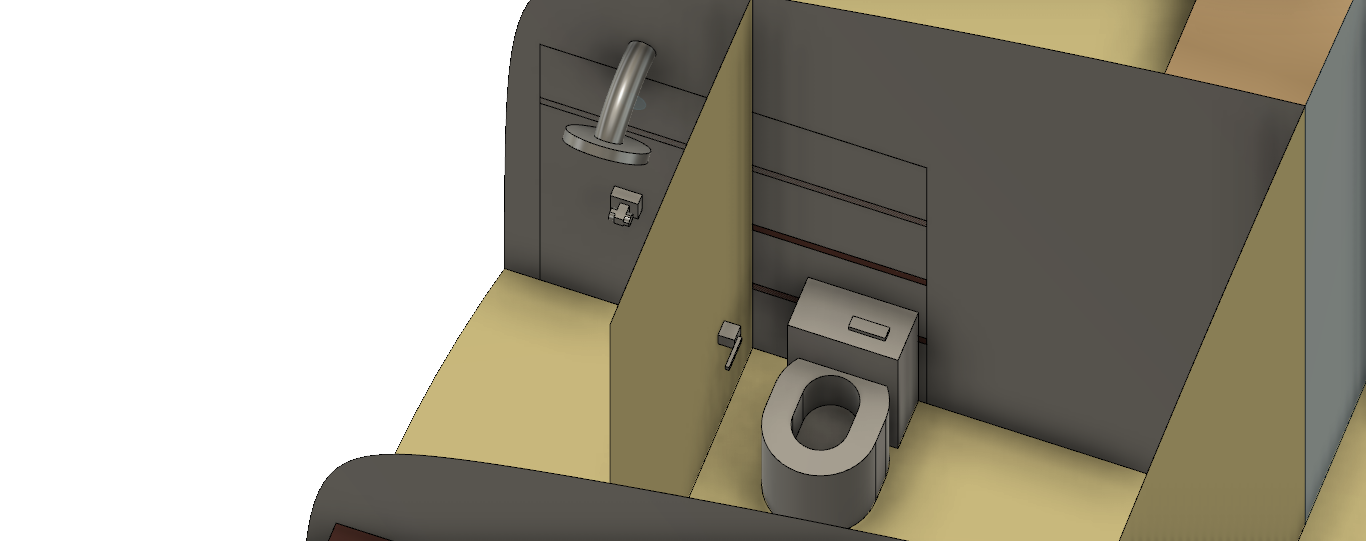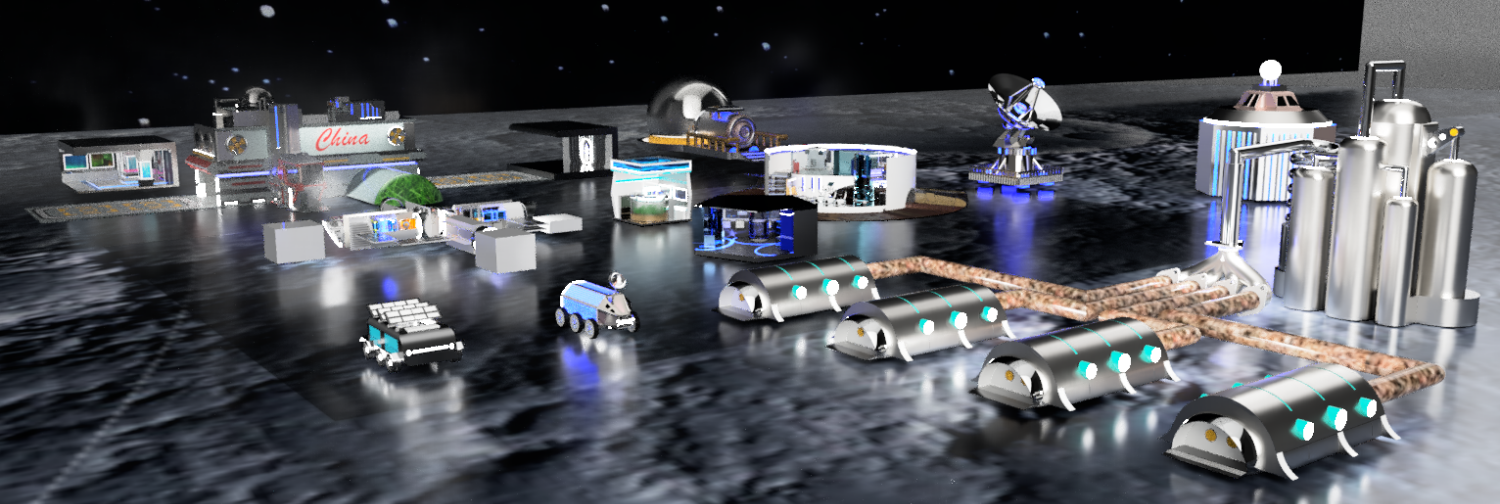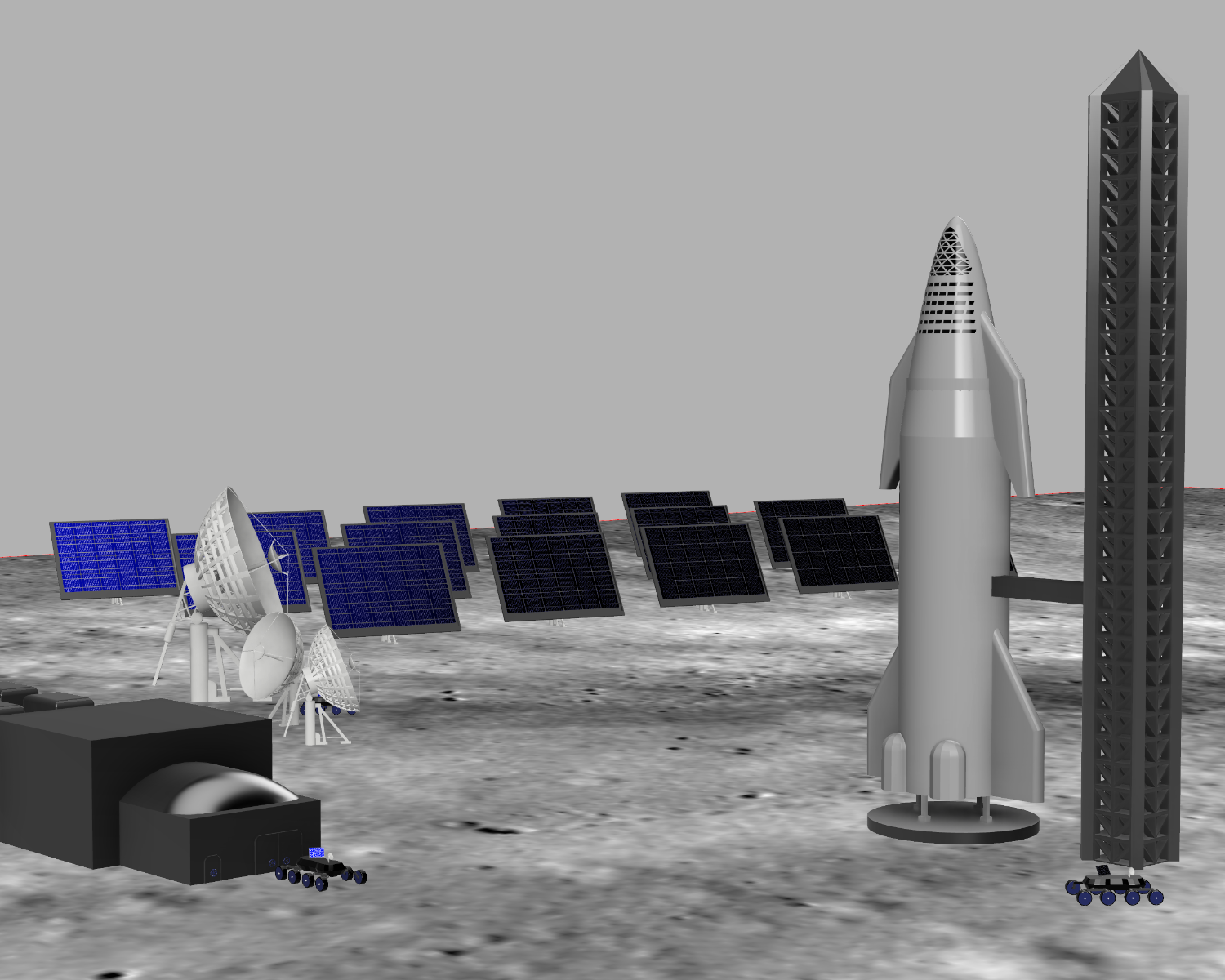Moon Camp Pioneers Gallery 2021-2022
In Moon Camp Pioneers each team’s mission is to 3D design a complete Moon Camp using Fusion 360. They also have to explain how they will use local resources, protect astronauts from the dangerous of space and describe the living and working facilities.
Team: Moony
Petroc College Barnstaple United Kingdom 17 3 / 0
External viewer for 3d project
|
Project description
The purpose of the Moon Camp is to establish a method of self sustainability in an atmosphere/ environment that is foreign to Earth. The base will be modular, and it will be possible to expand this base as time progresses. It may also be used as a midway point for longer distance expeditions in space to further our knowledge of the universe. |
|||
|
2.1 Where do you want to build your Moon Camp?
Due to the lack of the atmosphere on the moon, this means that it can reach extreme temperatures during a lunar day (which is around 29.5 days). Should a base be setup in this area where the temperature changes so often, it would be catastrophically impractical to setup some sort of ‘camp’ in this location, as specific measures would have to take place to maintain climate control. Therefore, we have come to the verdict that finding a location with a constant temperature is the best scheme. This would mean that camp would be setup in a crater on one of the poles of the moon, where temperature remains around -153 degrees all year round, which would allow climate control to be much easier and much more failsafe than setting up in a location with extreme hot and cold temperatures. The crater we chose was Copernicus, which is 93km in diameter, which allows lots of room for the expansion of the moon project. 2.2 How do you plan to build your Moon Camp? Describe the techniques, materials and your design choices.
will be a on-site-constructible modular layout as this is the most practical way of transporting structures for several reasons: It allows for compact storage and transport of the materials, meaning that less volume is required for the rocket’s payload. A modular design layout means that the base can easily be expanded upon later on the mission. Furthermore, the initial base can be constructed in stages from multiple rockets . will consist of a grid structure of rooms and corridors, both of which will contain both essential and non-essential equipment. This structural design was chosen for several reasons along with the ones listed previously: This is a strong structure which will be stable on the lunar surface because the modules have adjustable legs which allow the base to be built on uneven terrain. This gives us more options for the exact location of the base and for increasing the size of the base in different directions. This design is much safer than a large room for example because if there is a critical emergency in a module, it can be sealed off from the rest of the base to protect everything in other modules and stop the emergency spreading by isolating the emergency. After this happens, the module may be repaired and implemented back into the regular base operations.
The construction materials: which can fulfil the requirements below may comprise of materials like carbon fibre transported from earth to form the underlying structure of the base. Additionally, lunarcrete made from the lunar soil and other reinforcing materials produced on the moon (before any astronauts are sent there) will cover the base to protect from the harsh lunar environment. will need to be chosen carefully as they can completely change the physical properties of the base. Composites (like the ones listed above) can provide the essential needs for the base: Safety from the lunar environment including protecting the structure against meteor strikes, pressure, radiation and the cold vacuum of space. Low weight for being transported on rockets while maintaining good structural strength for the base. The construction methods: we will use to build the moon base include: Transporting initial materials, robots, and supplies from earth to the moon to establish the base before any astronauts are sent. This will be an essential part of the preparation process for construction of the base. The robots transported to the moon will be controlled by engineers on earth and will be used to construct the base as well as additional protection 2.3 The environment on the Moon is very dangerous for the astronauts. Explain how your Moon Camp will protect them. (maximum 150 words)
Temp – Due to the well-below freezing temperature of the moon, every module of the base will be heated to a temp of 20C, to stop the astronauts from freezing to death. As we have chosen the location of a crater, this means temperature will remain continuous and will not change, so the modules can remain at that temp. Moon dust – Moon dust is known to be very damaging to respiration of astronauts, due to its microscopic size that can shred the lungs. To combat this, suitable ventilation with thorough filtering of air will be in place to prohibit the dust from lingering in the air, to help keep our astronauts safe. |
|||
|
2.4 Explain how your Moon Camp will provide the astronauts with:
|
Water
|
Food
|
Power
|
Air
|
|
Can be made by mixing the hydrogen and oxygen (which are acquired in the processes above) together and adding a spark or sufficient heat to provide the activation energy to start the reaction. Water and also be provided by the usage of energy in the reaction (see below). Ice partially composes the lunar surface at the moon’s poles and could be collected by the rovers and turned into drinkable water. This could also be a very good way to get water. Waste water will be recycled and processed into drinkable water. |
Food at first will be supplied before research is done into growing plants. One way of growing plants could be aquaponics to grow plants with fish to produce enough food for the astronauts while not being very resource intensive. |
Power: Electrical power will be sourced from a small nuclear reactor, possibly a modernised version of the EGP-6 or other similar small nuclear reactors. Also much of the base’s power will be sourced from solar panels around the base. Some of the essential components for production of solar panels could be sourced from the lunar soil, particularly silicone and metals (iron, aluminium, magnesium and titanium). These (along with some other useful elements and compounds) could also be used in producing other useful appliances for the base as well as providing extra-terrestrial missions with vital resources when they stop on the moon to refuel. This will drastically reduce the weight of the rocket and its payload, making missions cheaper and more efficient. Liquid hydrogen (which is acquired in the processes above) can be used as a form of energy storage along with batteries to provide power to the base during the long lunar nights and when there is more supply than demand for energy. Rocket Propellant: Is substantially made up of oxygen and hydrogen (which are acquired in the processes above). Other components of the propellant can be transported to the moon. Refuelling rockets on extra-terrestrial missions is one of the main purposes of the moon base so this is how it would be produced. Rockets refuelling on the moon are very useful because landing and especially taking off from earth is very fuel intensive. It would decrease the amount of fuel required for missions, decreasing the weight of the rocket, and, as said before, making the missions cheaper and more efficient or allowing them to explore further into the unknown. |
Oxides make up over 40% of the lunar surface so oxygen will be extracted from the lunar soil collected by rovers by supplying enough energy to break the bonds or reducing the oxides with carbon or hydrogen. Oxygen can also be provided by splitting water into oxygen and hydrogen. |
|
2.5 Explain what would be the main purpose of your Moon Camp.
Our moon camp will serve as a main base for research into the field of how food such as potatoes and other vegetation grows on the moon, and how the environment of the moon affects growth and/or other factors. The production/ growth of food on the moon would eventually allow for a self-sufficient food source, with seeds being able to be harvested from the plants and regrown. We will also research creating a breathable air supply with resupplies of oxygen and hydrogen from earth, and a fuel supply to allow for further expeditions into space. A refuel station on the moon would allow for greater payloads and more supplies to make it to the moon. |
|||
|
3.1 Describe a day on the Moon for your Moon Camp astronaut crew.
Due to a lunar day being equivalent to 29.5 Earth days, it means that astronauts cannot act using any sort of moon time. This means that the astronauts will act on GMT, and switch to BST when the UK does too. This is because mission control will be based in the UK. The astronauts will work from 6am-6pm each day, the rest of the time will be used for leisure and rest. Whilst on the moon, astronauts will strictly follow this routine:
|
|||








